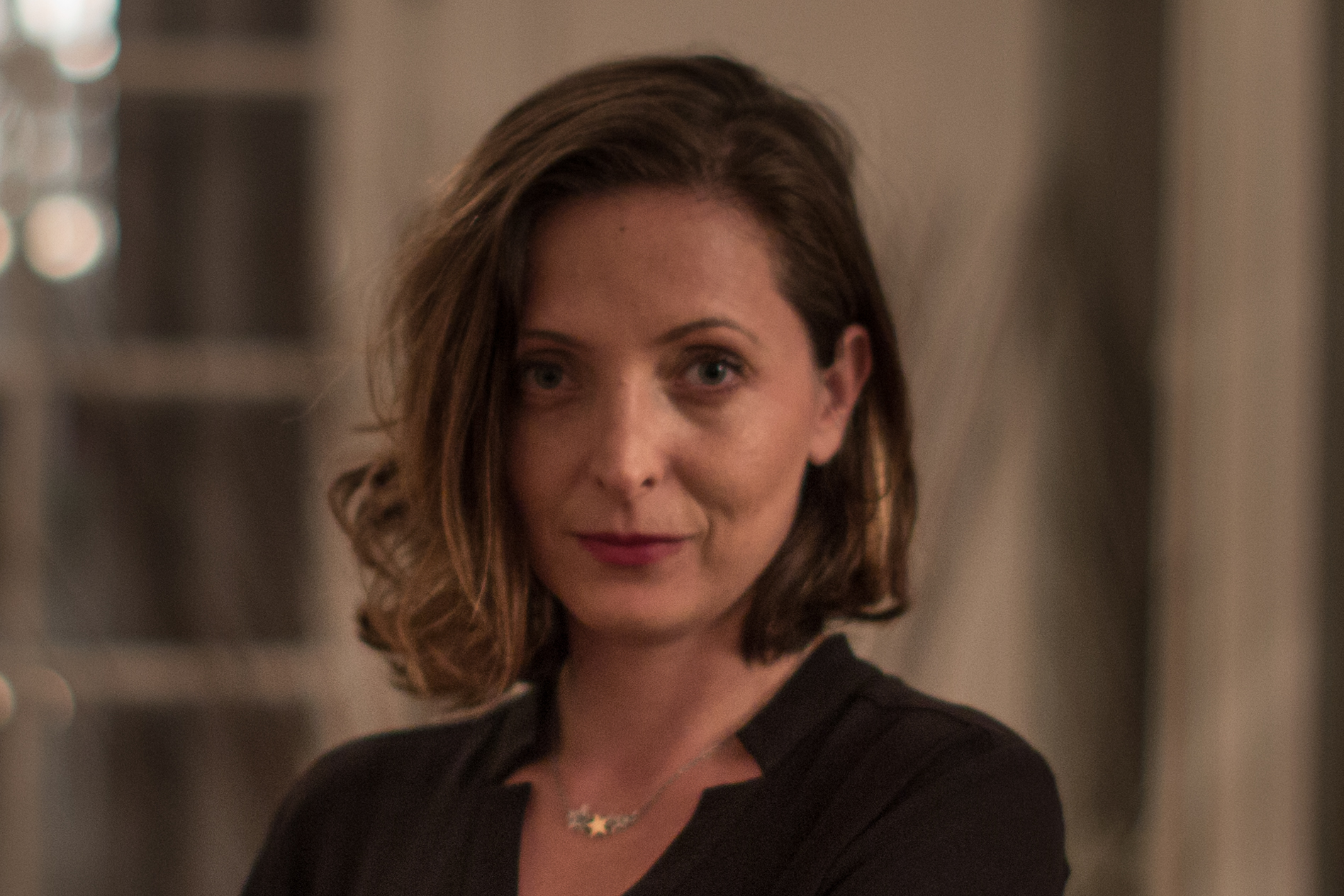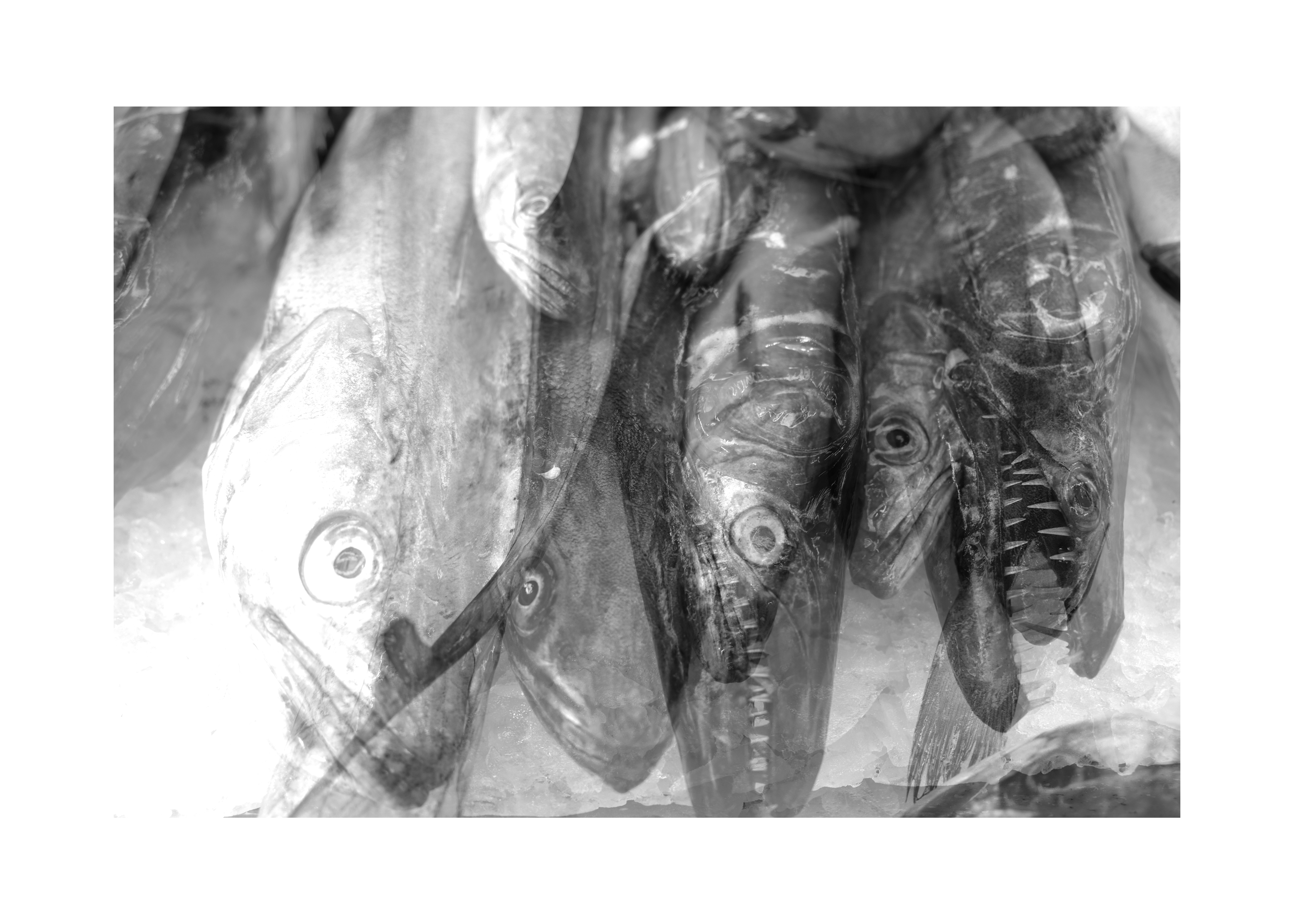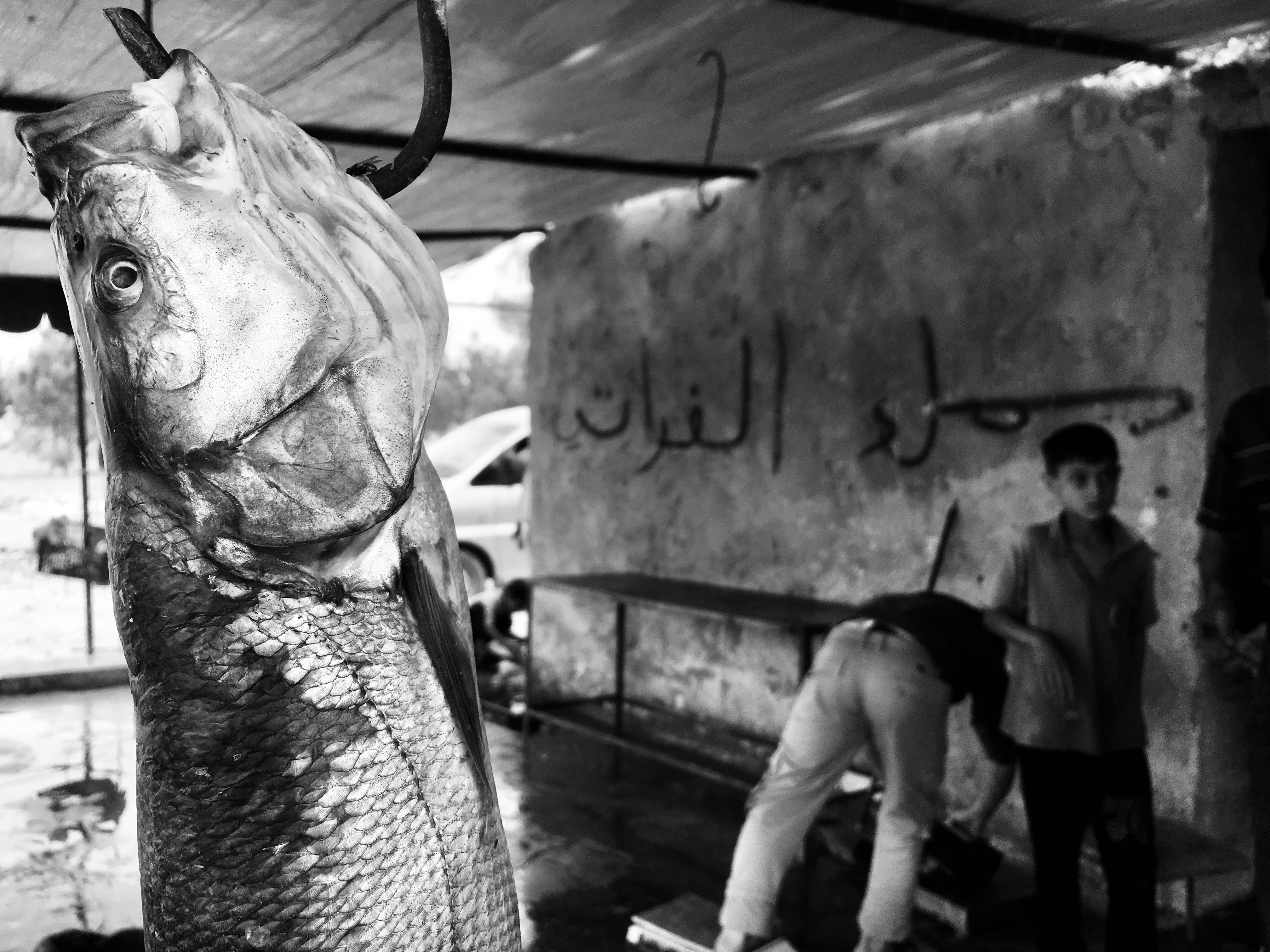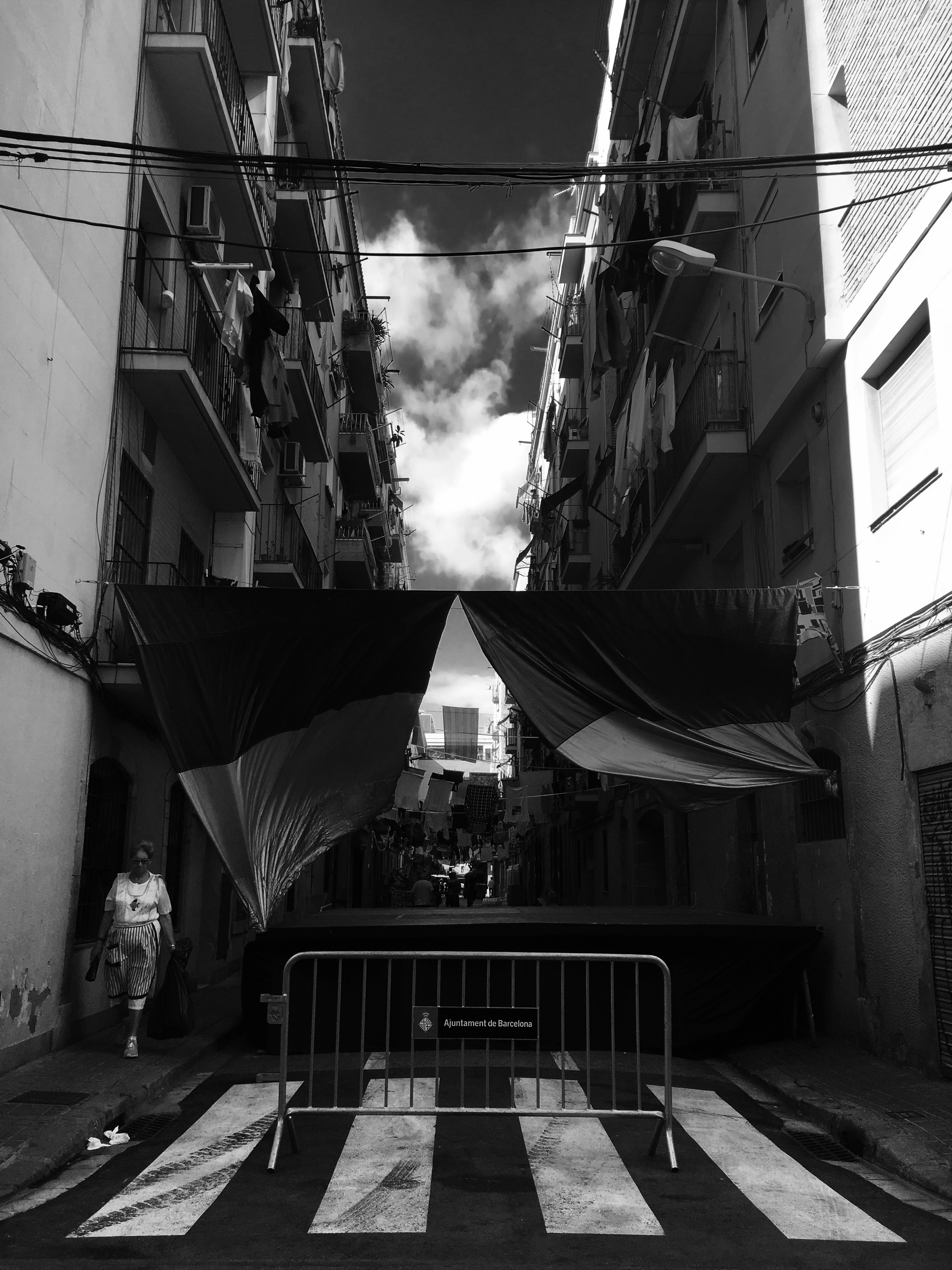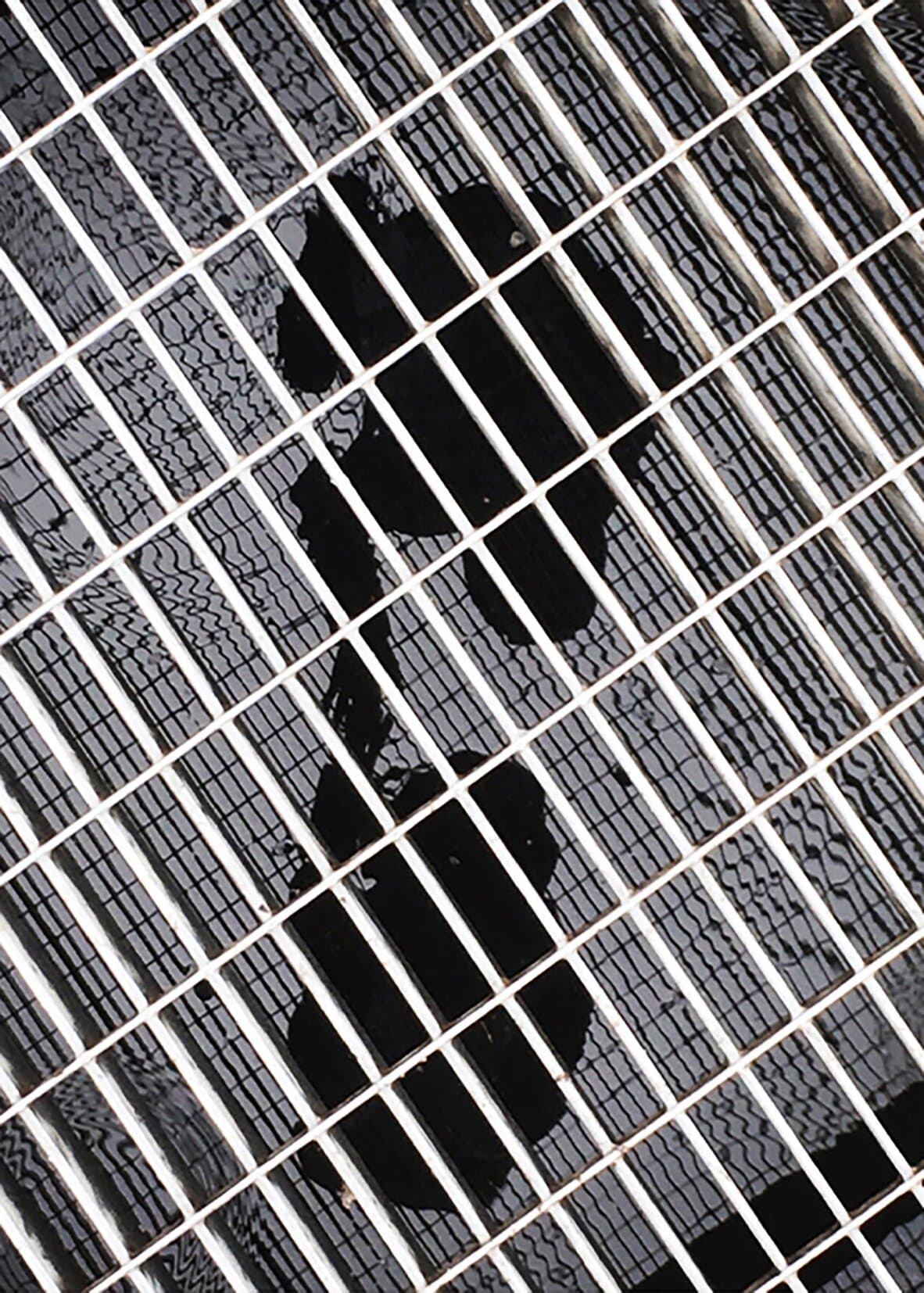This story is part of SyriaInFocus, a series on Syrian photography funded by the Friedrich Naumann Foundation for Freedom, with guest editor Sima Diab.
Guevara Namer is a Syrian Kurdish artist, photographer and filmmaker. Now living in Berlin, she is working on her first photography book, Dialogue With Absence. SyriaUntold spoke with her in recent months about Syrian images, the Syrian narrative and what it means to have been a Syrian photographer over the past decade of revolution and war.
This conversation was edited for length and flow.
How do you describe your own narrative and how it fits into the wider context of Syrian photographers? Do you think this narrative changes with a Western audience? Who should be the audience of Syrian photographers?
I have a lot of questions around that specific term, “Syrian photographers,” that puts all of us into the same box. I think that’s not really reflecting the reality of all the narratives that have emerged and the people who have photographed and then carried those narratives from one place to the rest of the world. I don’t know to what extent we can be called “Syrian photographers” because the understanding of photography and how people have dealt with that narrative since 2011 is different.
Before 2011 for me, there was this sense of documentation but an understanding that the camera is dangerous and unwelcome in the street. After 2011 the tool—the camera—became one of the most common in the streets. That’s why when I’m working on my book project, I call certain people “the image creators.” I don’t call them photographers. For me, they are not all photographers. People who held cameras after 2011, some of them became photographers. How many of us are aware of the camera when we are telling a narrative? When you think of yourself, the practice, the subject in front of you and the audience in this context, that is when you’re moving to the next step. When you cross the point of knowing that this is something digital—I’m pressing a button and it’s saving on a memory card and I’ll send it to whoever is asking for it—then the mentality of the process changes.
I always wonder about this. I and other people who have documented events—are we all photographers? I think it’s a valid question.
I think this is an important question on its own. In your opinion, who is a photographer?
I don’t think anyone has a statistic or a definitive understanding of who was a photographer in Syria. I was speaking to another Syrian photographer recently, and he said there really weren't photographers in Syria before [2011]. I told him this claim really needs more research. For example, Mohammed Al Roumi photographed Syria from an airplane, from above. There was also Nasssouh Zaghlouleh. [Film director] Omar Amiralay did photographic work, as did many others. There are young women graduates from the same institution I studied at, 20 years ago. I have no idea where they are now, surely they haven’t all become wedding photographers.
Before 2011 for me, there was this sense of documentation but an understanding that the camera is dangerous and unwelcome in the street. After 2011 the tool—the camera—became one of the most common in the streets.
I joined a walking group and used it to discover new spaces, visually, in Syria, because there were places that were impossible to go to alone. Through the group, I found people who were very interested in photography. They dealt with it as a passion or a hobby, but not as an artistic practice. Their work must be a unique archive for a country that was not openly photographed. There wasn’t a single photography book at the time. The first time I held a photography book was when someone brought one back from France. I literally cried. Here, somebody was telling me something, and it wasn’t just pictures for touristic guides. And this stuck with me. It was about storytelling.
Do you think your simplified understanding towards photography and the camera helped you, or did it hinder your progress in photography?
I don’t know, to be honest. For me, the absence was what pushed me to search, because I was living in a place where there was nothing.
At the institute where I learned photography, the professor who taught us the chemistry of photography was a department graduate. He had a notebook from when he was a student. He learned from someone called Jamil Jazairi in the Soviet Union. So he brings this notebook and just transfers that information from the notebook to us. I ended up burning the first five rolls of film I made!
How many of us are aware of the camera when we are telling a narrative?
We were just improvising and creating. There were people who entered just because they couldn’t find any other department after they finished their secondary school diploma.
I also think my identity [as a Kurdish person] motivated me. There was always this feeling of impossibility, because we are the “ajanab” [“foreigners”] of Hasakah. It is difficult for us to study or find employment in Syria. My father is a lawyer but he couldn't practice. Our possibilities are limited. As a result, the Syrian Kurdish art scene is amazing. There are people who are leaving their mark. They have a style, an evolving identity. When you see a piece of art, you know who created it.
I think this is the biggest compliment to an artist in general, that you can recognize them without mentioning the name.
Exactly. There were people like that who worked in drawing, but not in the field of photography. Some people could recognize certain photographers from technical aspects, like the filters they used (which for me are more a technical rather than an artistic choice). Sometimes it happens that a piece of work charms me and sometimes it happens that it is the technical side that convinces me, which is different from the style.
In school, I was obsessed with cinema and filming. It came out of nowhere—I didn't come from a family with that background. And then you start this struggle, as you discover that there is no cinema school in Syria and that you can't go abroad as some other students might.
So in the end I went to the photography institute. And I was depressed, because cinema was what I wanted to do but everything told me that would be impossible. This was the history of my family, everyone sitting and waiting, all the old generations, my father, my mother, uncles and aunts. The right moment to do something simply never came.
This weighed really heavily on me. So I went to the institute and saw that Soviet-era notebook, and it was ridiculous, like those supermarket notebooks. Of course it was completely ruined with coffee stains and parts of it were illegible, making you miss half the lesson. But all that hunger to learn made me pour all my anxiety into photography.
Right now, having a camera and going to photograph in that mindset is amazing, like a deep breath. It’s like being myself. My camera is me, my photography is me, doing something with a photo is me. I found myself as a human being. I was 21 years old then and I had waited my whole life for this, to have this bodily connection with this invention to see the world.
Very interesting is this relationship between the photographer and their camera. What is that relationship like for you? Is the camera an extension of what you’re doing? Is it a tool, or part of the process itself?
I don’t think it’s just a technical process. I can’t deal with a camera like it’s a separate thing from myself. I feel like there’s a unity of everything. It is more an extension of the eye.
How do you feel about the relationship between this pre-2011 Syria and photographers who emerged post-2011? Now I think some people would say that we are reaching this post-conflict stage, where fighting or an active war is largely not taking place. What is the identity of the Syrian photographer?
I think pre-2011 photography was more about the self, and intimate. After 2011, it was like BOOOOOOOM, it was never about yourself. It would have been a privilege to sit and ask yourself questions or to produce reflections. People were dying and, very simply, we were only photographing that.
If you asked why we picked up cameras in 2011, we’d say we were asking for help: “Where are you, human rights defenders? Where are you, Arabs?” People just wanted to show these crimes to the world and ask for help.
This was the history of my family, everyone sitting and waiting, all the old generations, my father, my mother, uncles and aunts. The right moment to do something simply never came.
There were no individual stories then, only stories documenting what was going on.
Exactly. This is the right time to go back and look beyond the events. I’m trying through my book to retell the narrative. I’m pushing into this space, inviting others to start telling their different narratives or to figure out: What was the narrative behind these images? In 10 years the narrative has changed. In 2011 it was a revolution of photography and in 2012, 2013 2014, we reached the epitome of photography in the sense of the image. In 2016 there was a big change in the making of an image.
Yes, there seems to have been a shift after 2016, when fewer people were practicing photography in Syria because more people were leaving. This created blind spots in locations we could no longer access.
For me it’s exclusively because the shock wore off. There’s nothing in the war that hasn’t been photographed, so what then becomes of the war photograph? An image of a victim, an image of the criminal, the image of an aid worker, group images, single images, an image of a child, of a woman, of a woman in a hijab. Created created created, seen seen seen.
We also don’t see anymore because people stopped photographing with such proliferation and they stopped photographing for many reasons. There are lots of reasons: political, logistical and strategic. I also think a large part of it is that the presence of a camera is now taken for granted.
Do you think we can change the image Syria now has as a country at war, a country in conflict, that it’s very violent? Are we at that stage yet?
I don’t know whose job that would be. In photography, I think about what I’m doing myself as an individual, regardless of whatever else I’m opening the door for. If the projects I’m working on have that effect, then okay, but the intention must be collective.
Let’s fast forward 20 years, 30 years. What do you think we’re going to look back on from today?
I think it will be a treasure, despite everything we’ve already seen. We will need to go back to this archive, take another look and piece together the puzzle to tell the stories.
If you asked why we picked up cameras in 2011, we’d say we were asking for help.
Without storytelling, these images are useless. They would just be a huge amount of material, massive hard drives—all these materials could, in a technical sense, disappear. How would we have benefited unless we put everything into a narrative, into context, and we offer it up for conversation? How do we read all these images, like the ones of those who died under torture?
If we just take them as they are, upload them, then what does this stuff even mean? What are we going to understand? We won’t understand anything and we won’t be able to comprehend them. We need to keep telling the stories of the people in these photographs and their families, so they are not just images of bodies. On Youtube there are thousands of clips without names or subtitles or dates, without the context of who filmed it or the place or anything. It’s the same thing with photographs.
What does it mean to be a photographer and to be Syrian, and where do you find yourself?
For me, I don't know. I see myself as always trying to convey something, so I think I can say I’m an artist somehow, with my camera in filmmaking or in photography. But at the end of the day it’s about storytelling.
There’s a story I’m interested in telling, in sharing with other human beings. It doesn’t matter if that story is inside or outside Syria—I never really look at it that way. When I was in Syria in 2007 I wanted to do something about myself, the individual. I wanted to show the world, not only Syrians: This is my life, this is my house, this is my father who named me after Che Guevara! I didn’t know if an international audience would be interested in that. But identity has been a big question for me my whole life. One project after the other, every year that goes by, I started to realize just how big of a question that is for me. I never had an ID as a Kurd, and the first time I did, I had to leave the country. This is my relationship with my identity. We used to have conversations about what it means to be a citizen and I used to say: “Guys, I don't even have a citizenship card!”
So I have an obsession with figuring it out. What does it mean to be Kurdish from a communist family living in Damascus, speaking Arabic on the streets and Kurdish at home, and knowing it was dangerous for us? How is this not going to affect you when you are an artist trying to express things?
So I have been trying to express these existential questions. I think these questions are what pushed me into the art scene because I believe you can’t be an artist without being deeply honest with yourself.
Editor’s note: A previously published version of this interview included several factual errors, which have been corrected. SyriaUntold regrets the mistake.


